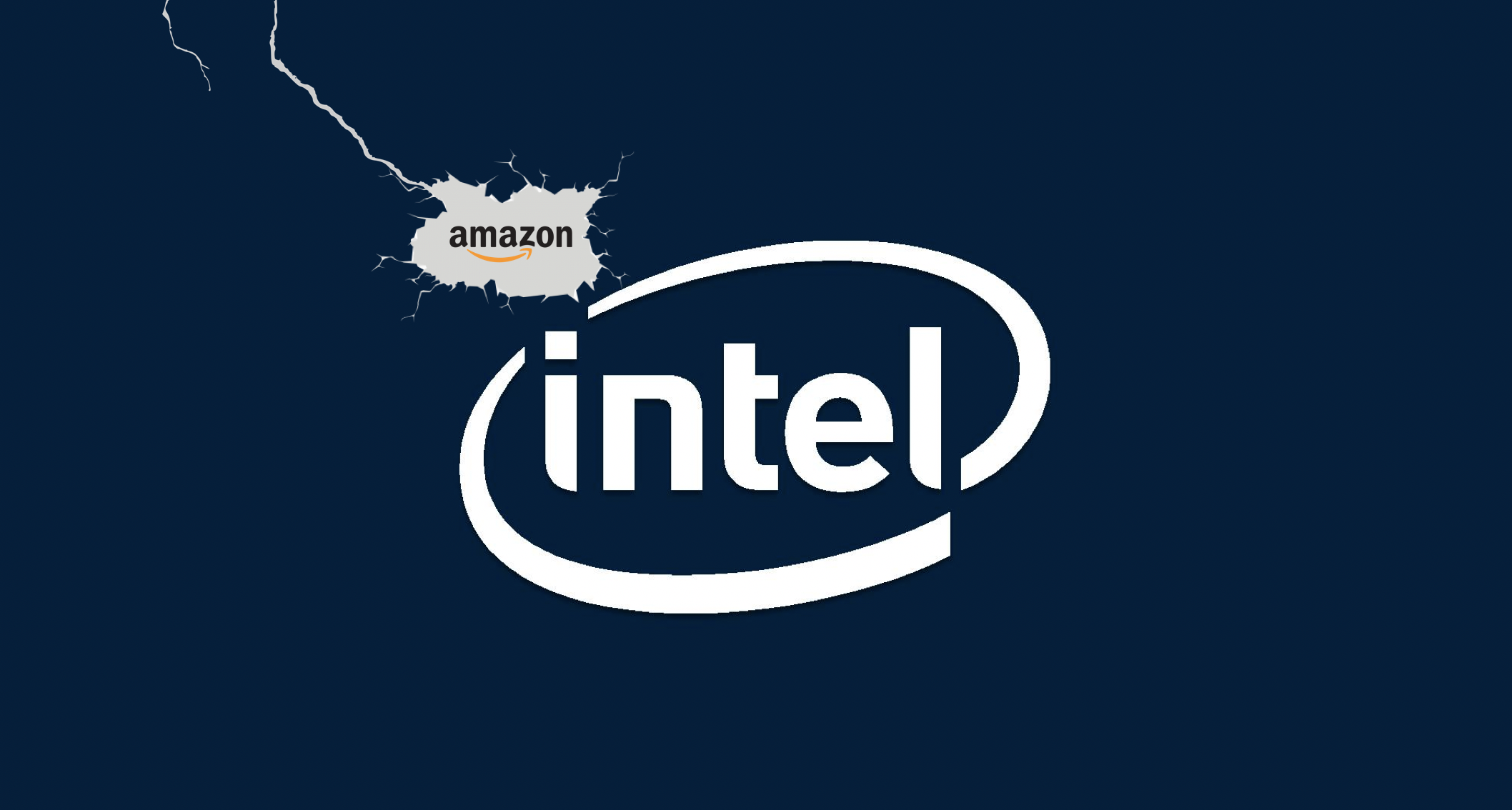A Crack in Intel’s Armor
On November 26th 2018, Amazon announced the release of Gravitron, a custom made ARM based chip that the company designed in-house to power a portion of its cloud service. Amazon will charge significantly lower prices to customers that opt to use this service. In our previous article, we wrote about how Amazon is eating the world by expanding into other sectors such as healthcare and logistics. With the announcement of Graviton, you can add another sector to the list: server computer chips.
To understand the significance of this announcement, it is worth taking a step back to talk about Intel. Intel makes X86 based chips, and is the leader in designing and manufacturing computer chips in the server market. It has 98% market share globally. The server market has been the primary growth driver for Intel, generating a revenue of US $19 billion in 2017 and growing fast at 26% in Q3 2018. Figure 1 below shows the net revenue (in millions USD) of Intel’s two largest business units. The client computing group represents the PC income, which has stagnated as the PC industry is increasingly saturated. The data center group represents revenue from the server market, which is growing faster.

Figure 1: Net revenue of Intel’s two top business unit
Overall, the server industry, which comprises of both on-premise and cloud segments, is growing at a rapid pace (43.7% year over year growth). This growth is primarily driven by the cloud segment, and is being captured by the largest cloud service providers. Being a cloud provider is very capital intensive; therefore, only the largest tech companies can continue to operate and invest in this fast growing segment. As such, the market is concentrated in a handful of companies such as Facebook, Google, Microsoft, Amazon, Baidu, Alibaba and Tencent. Intel internally recognizes them as the super 7. These companies buy hardware from Intel more frequently than others (with a 3 year replacement cycle vs. a 5 year replacement cycle), and have an agreement to get the latest and fastest Intel hardware six months before their competitors.
Historically, Intel’s dominance is predicated on its ability to innovate better than its competitors, delivering computer chips with the best performance. Its XEON X86 based processor is the best in class. Since performance is very important in cloud computing environment, this gives Intel power over its customers. Intel exercises its power by increasing the selling price of the XEON processor over time in an effort to optimize profits.
Inevitably, as these cloud companies continue to become larger, they will strive to drive their hardware cost down by finding an alternative supplier. This was not feasible before, as the performance gap between Intel’s X86 based processor and its competitors’ ARM based processors is too large despite ARM chipset being more power efficient. However, Intel has been struggling with its latest processor development. This has allowed its competitors to catch up and narrow the gap. As a result, it is now reasonable to have an ARM based chipset that can be used for cloud applications at a lower performance but at a lower energy cost.
This is the crack in Intel’s formidable armor.
Amazon is not the only one that is trying to create an alternative to Intel’s product. Ampere, a start up led by Intel’s former president, Renee James, is also releasing an ARM based server processor.
Amazon’s development of Gravitron has been years in the making. The team that developed the chipset originated from an acquisition of Annapurna Labs in 2015. Nonetheless, this new development does not mean that Amazon will cease buying Intel’s XEON. Amazon will still acquire large quantities of XEON since the chip still offers the best performance. However, as Amazon Web Service becomes larger (currently 41.5% market share), there is little doubt that Amazon will continue developing chipsets, and that other cloud providers will follow Amazon’s footsteps (if they have not begun development already) since developing customized chipsets can lower cost and deliver differentiated products.
Intel’s supremacy has been due to its performance advantage, and this performance gap has been narrowed due to Intel’s recent struggle with its latest processor design. As such, it has become viable for Amazon and others to build a cheaper alternative. This may be the beginning of a power shift in the server chip market. Currently, Intel, as the supplier, holds power. In the future, the balance of power may shift to its customers, Amazon and other cloud providers.















